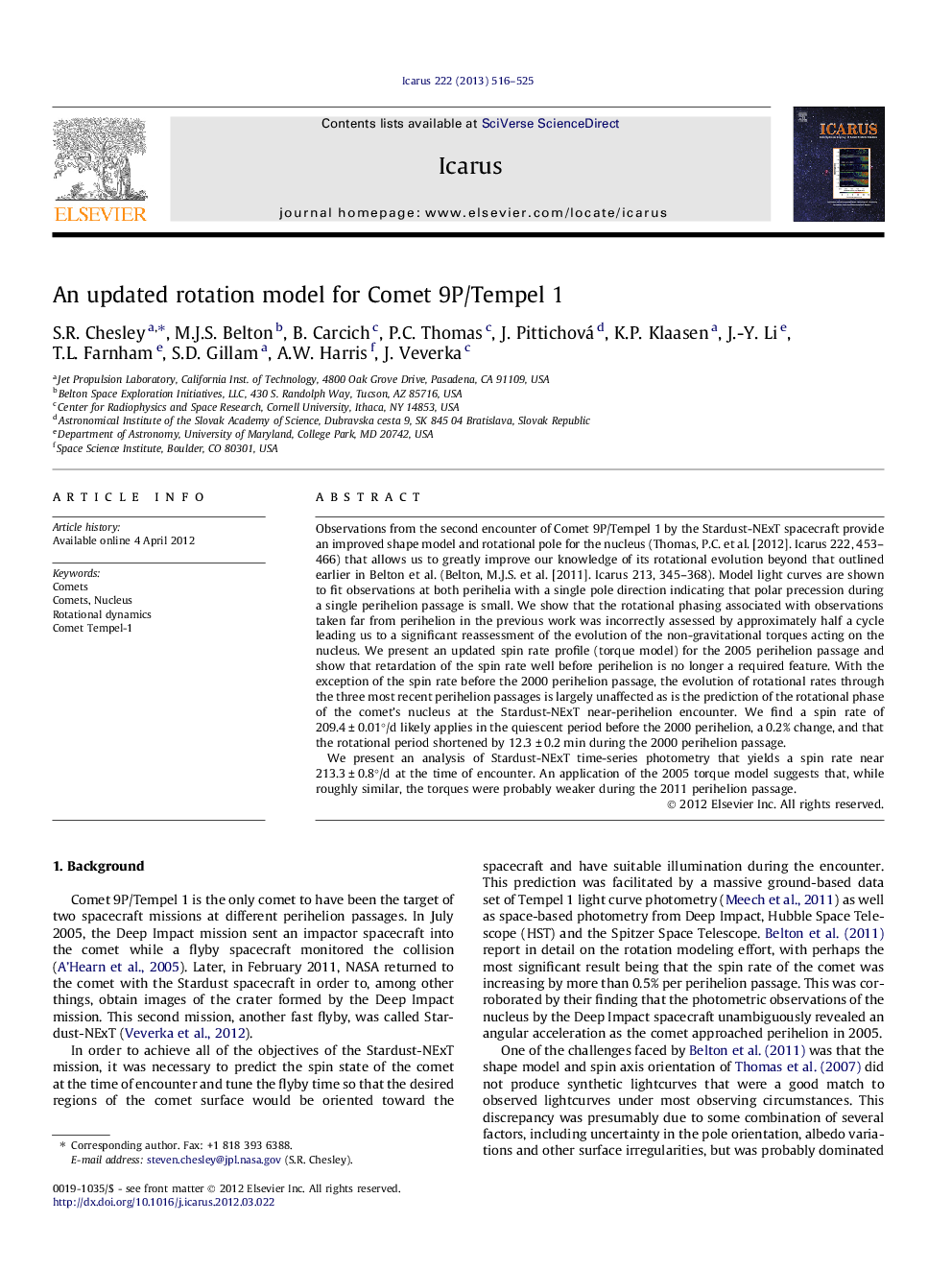| Article ID | Journal | Published Year | Pages | File Type |
|---|---|---|---|---|
| 1773316 | Icarus | 2013 | 10 Pages |
Observations from the second encounter of Comet 9P/Tempel 1 by the Stardust-NExT spacecraft provide an improved shape model and rotational pole for the nucleus (Thomas, P.C. et al. [2012]. Icarus 222, 453–466) that allows us to greatly improve our knowledge of its rotational evolution beyond that outlined earlier in Belton et al. (Belton, M.J.S. et al. [2011]. Icarus 213, 345–368). Model light curves are shown to fit observations at both perihelia with a single pole direction indicating that polar precession during a single perihelion passage is small. We show that the rotational phasing associated with observations taken far from perihelion in the previous work was incorrectly assessed by approximately half a cycle leading us to a significant reassessment of the evolution of the non-gravitational torques acting on the nucleus. We present an updated spin rate profile (torque model) for the 2005 perihelion passage and show that retardation of the spin rate well before perihelion is no longer a required feature. With the exception of the spin rate before the 2000 perihelion passage, the evolution of rotational rates through the three most recent perihelion passages is largely unaffected as is the prediction of the rotational phase of the comet’s nucleus at the Stardust-NExT near-perihelion encounter. We find a spin rate of 209.4 ± 0.01°/d likely applies in the quiescent period before the 2000 perihelion, a 0.2% change, and that the rotational period shortened by 12.3 ± 0.2 min during the 2000 perihelion passage.We present an analysis of Stardust-NExT time-series photometry that yields a spin rate near 213.3 ± 0.8°/d at the time of encounter. An application of the 2005 torque model suggests that, while roughly similar, the torques were probably weaker during the 2011 perihelion passage.
► Stardust-NExT imaging leads to an updated rotation model for Comet 9P/Tempel 1. ► Comet Tempel 1 is increasing in rotation rate by ∼0.5% per perihelion passage. ► A jet-based torque model roughly matches the observed spin velocity profile.
